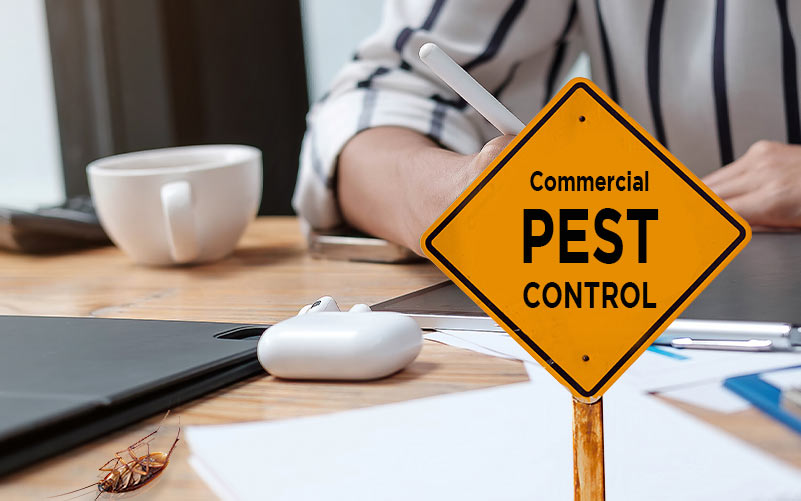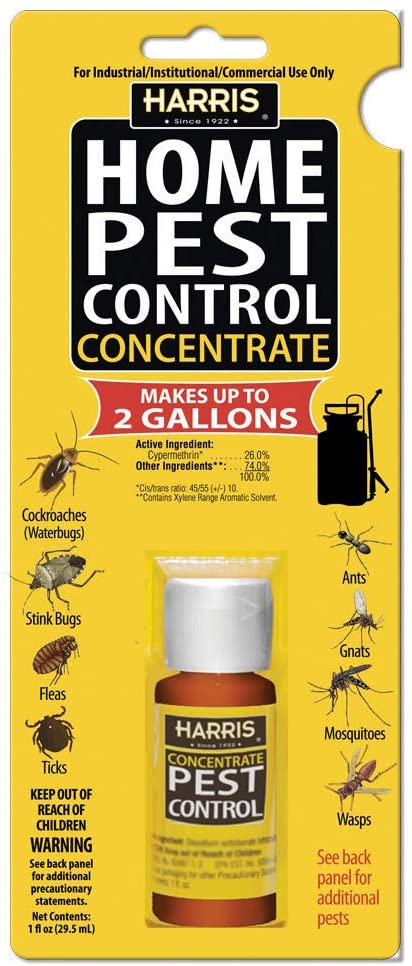Experienced A1 Exterminators Charlotte NC - Rapid and Reliable Solutions
Experienced A1 Exterminators Charlotte NC - Rapid and Reliable Solutions
Blog Article
Bed Pest Treatment Breakdown: Comparing Chemical Vs. Non-Chemical Solutions
In the realm of insect control, specifically when managing the relentless problem of bed insects, the option in between chemical and non-chemical treatment solutions can be a pivotal one. Both approaches offer distinct advantages and downsides, influencing factors such as effectiveness, security factors to consider, and total price. By analyzing the nuanced information of each approach, a clearer understanding of which course to seek in resolving a bed bug infestation can be achieved.
Efficiency of Chemical Therapies
Chemical therapies for bed pest invasions have been extensively recognized for their fast and potent efficiency in eradicating these insects. When taking into consideration the performance of chemical therapies, it is essential to comprehend that they can supply a complete and quick option to a bed bug problem. Professional pest control specialists usually rely upon insecticides to target bed insects at various phases of their life cycle, consisting of adults, nymphs, and eggs. These chemicals normally work by disrupting the bed bugs' nerve system, leading to paralysis and ultimate death.
Additionally, chemical treatments have the benefit of offering residual effects, suggesting that they can continue to eliminate bed insects even after the initial application. This residual activity is especially useful in combating any possible re-infestations. Additionally, the fast action of chemical therapies can bring relief to individuals encountering serious bed pest invasions, allowing them to gain back control of their living spaces swiftly.
Safety And Security Worry About Chemical Solutions
One crucial aspect that requires mindful factor to consider when using chemical options for bed bug treatment is making sure the safety of residents and the setting. Direct exposure to certain chemicals made use of in bed bug therapies can lead to respiratory problems, skin inflammation, or other negative responses, especially in individuals with pre-existing problems or sensitivities.
Moreover, the ecological effect of chemical solutions is one more significant factor to consider. Some pesticides used in bed pest therapies might be damaging to useful pests, wildlife, and communities if they seep right into the soil or water supply. It is important to make use of chemical treatments carefully, adhering to security guidelines, and considering less harmful alternatives to minimize these threats and make sure the safe and efficient management of bed pest infestations.
Advantages of Non-Chemical Approaches
Thinking about the possible security worries and environmental impact associated with chemical remedies for bed bug treatment, discovering non-chemical strategies offers a promising alternative with a number of distinctive advantages. Non-chemical treatments are environmentally pleasant, as they do not contribute to air or water air pollution, making them a sustainable selection for insect control.
Additionally, non-chemical remedies can be efficient in targeting bed bugs, including hard-to-reach locations where chemical treatments might not penetrate. Approaches such as warmth treatment, vacuuming, steam cleaning, visit site and cushion coverings give complete eradication without the use of hazardous chemicals. Additionally, non-chemical techniques can be less disruptive, requiring marginal preparation and enabling quicker reentry right into dealt with areas. Generally, going with non-chemical bed insect therapy methods not just focuses on safety and environmental management but likewise makes certain efficient and detailed parasite control.
Limitations of Non-Chemical Treatments

In addition, non-chemical treatments typically call for several applications to attain successful obliteration. This can be lengthy and may not constantly ensure full removal of all bed pests and their eggs, especially in surprise or hard-to-reach locations.
Additionally, the success of non-chemical therapies heavily relies upon correct application and thoroughness, which can be challenging for individuals without specialist proficiency. Inadequate application of non-chemical approaches might cause insufficient eradication, leading to relentless invasions and the need for extra therapies.
As a result, while non-chemical treatments have their advantages, it is important to acknowledge these restrictions and consider them when figuring out one of the most efficient technique for taking care of bed pest problems.
Price Contrast: Chemical Vs. Non-Chemical Options
Given the limitations linked with non-chemical treatments, a vital element to examine in the context of bed pest management is the price contrast between chemical and non-chemical choices. In comparison, non-chemical basics treatments like warm therapy or vapor can be much more costly, with prices ranging from $1,000 to $6,000 for a whole home. While the initial expense of chemical therapies may appear reduced, several treatments might be called for to completely eradicate the infestation, possibly raising the overall cost.
Final Thought

Thinking about the possible safety issues and ecological influence associated with chemical options for bed pest treatment, checking out non-chemical strategies provides an encouraging choice with numerous distinctive advantages.Given the limitations linked with non-chemical therapies, an essential aspect to examine in the context of bed pest administration is the cost comparison between chemical and non-chemical choices. In contrast, non-chemical treatments like warm therapy or vapor can be more costly, with prices ranging from $1,000 to $6,000 for a whole home. While the initial expense of chemical treatments may appear reduced, several treatments might be required to completely eliminate the infestation, potentially enhancing the general expense.In verdict, when contrasting chemical and non-chemical bed pest treatment choices, it is important to think about efficiency, safety and security, advantages, limitations, and price.
Report this page